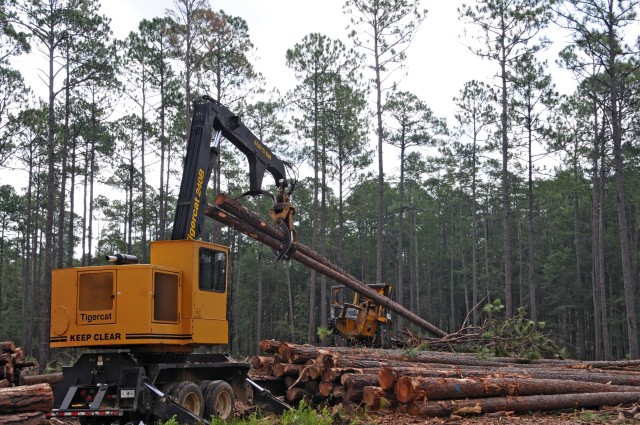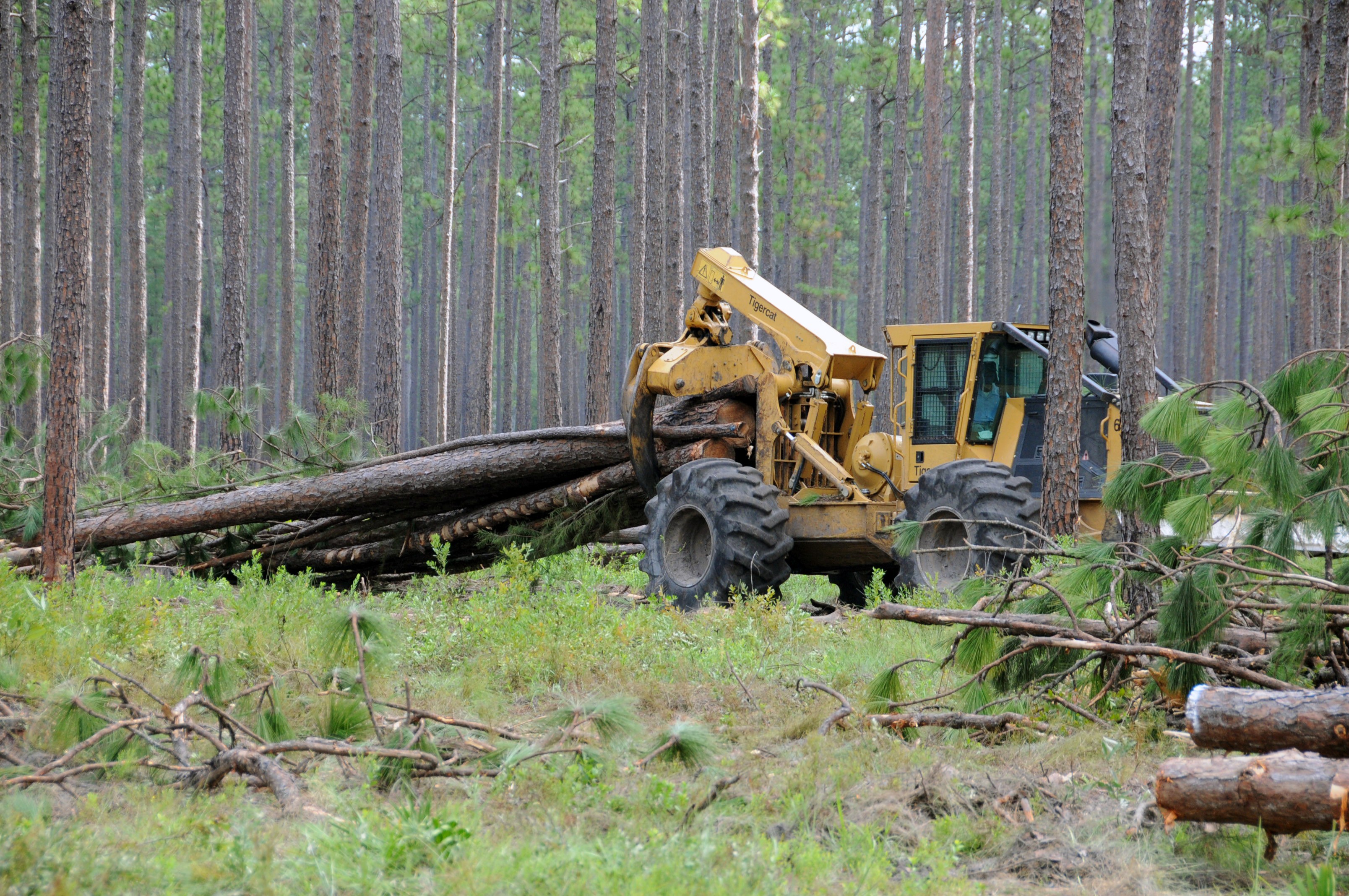FORT STEWART, Ga. -The total economic activity making up the forest industry in Georgia amounts to nearly $30 billion a year. This figure includes not only the actual sale of timber statewide but also the wages of more than 128,000 forest industry employees plus federal payments to landowners. Part of that figure also includes timber sales at Fort Stewart and Hunter Army Airfield.
Annual timber sales at Stewart-Hunter amount to more than $5.2 million. According to T.J. Quarles, timber management section supervisor for the Forestry Branch of the Environmental Division of the Directorate of Public Works, Stewart-Hunter usually ranks first or second for timber income among Army installations, ahead or behind Fort Lewis, Wash.
He said timber harvested at Stewart-Hunter each year is nearly 91,000 pine cords and about 7,000 hardwood cords. A cord of lumber is a unit of measure equivalent to a pile of round wood 4-feet wide, 8-feet long and 4-feet high. A less accurate conversion would equate a cord to 500 board feet.
Quarles said most timber harvested on Stewart-Hunter is done through thinning of selected trees, although the clearcut method is used for major construction projects like the new brigade facilities being constructed on GA-144.
He explained that a timber harvest on Stewart-Hunter begins with a "prescription" or proposal to harvest selected trees in a designated area. When the prescription is approved by the Environmental Division of DPW, it is sent to the Corps of Engineers, which administers the contract to a lumber company following a bidding process.
"The market tends to set the price for timber," said Quarles, a University of Georgia graduate from Lyons, Ga. "We do establish a minimum price, however, and if no one bids high enough to meet that minimum, no contract will be awarded."
As timber management section supervisor, Quarles supervises 11 Army Civilians and three contract employees, all forestry technicians with 2-year degrees in forest technology, plantation management or forest resources. Quarles said forest technicians mark each tree to be harvested; he then explained that pine timber is graded according to its value.
Depending on the size and health of the tree, pine timber increases in value, beginning at "pulpwood" then "pine chip and saw" then "pine saw" then "pine pole." Pine timber harvested at Stewart-Hunter is usually loblolly or longleaf pine, Quarles said.
He added that Stewart-Hunter is trying to regenerate longleaf pine whereas timber companies managing large tracts of land off-post tend to favor loblolly.
"Loblolly grows faster than longleaf pine," he explained. "This can mean more bang for the buck, if you're looking for a quick turn-around. Longleaf pines are slow-growing and hard to regenerate. They establish a deep root system first then they start to grow. However, longleaf pines are more resistant to wildfire and disease."
Quarles said if axes and chainsaws come to mind when you think of timber harvesting, you're behind the times. In South Georgia, trees are cut down using a large, dozer-looking piece of equipment called a "cutter" or "feller-buncher."
The cutter is driven up to the desired tree with the saw blade at the base of the tree as close as possible to the ground. Once sawed through, the cutter can hold the tree, tilting it to the left or right, dropping it wherever it's wanted.
After the marked trees have been cut, a "skidder" gathers the fallen trees in bunches then drags them to the next stage of the logging operation. These trees are picked up one or two at a time by a "knuckle boom loader," which swings them in place for a trimmer to take off limbs and cut them off at the desired, minimum girth. The logs are then sorted by grade in stacks of timber that will be loaded onto flatbed trucks.
After deducting for expenses, the sale of Stewart-Hunter timber is shared with surrounding counties, Quarles said, which he added makes his job all the more rewarding.
This husband and father of two loves the work he does and the fact that a part of what he does goes back to the community and state he calls home.




Social Sharing